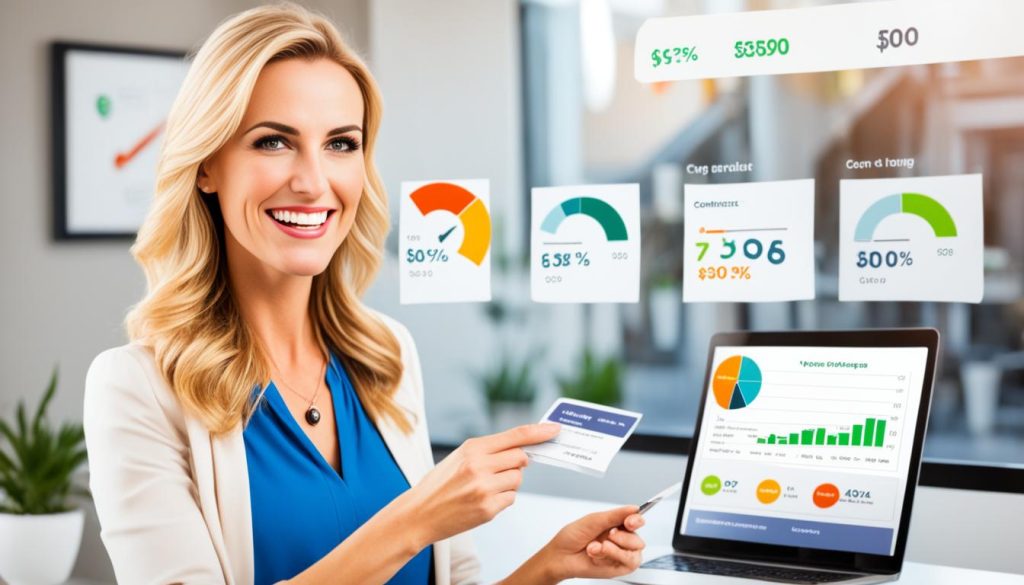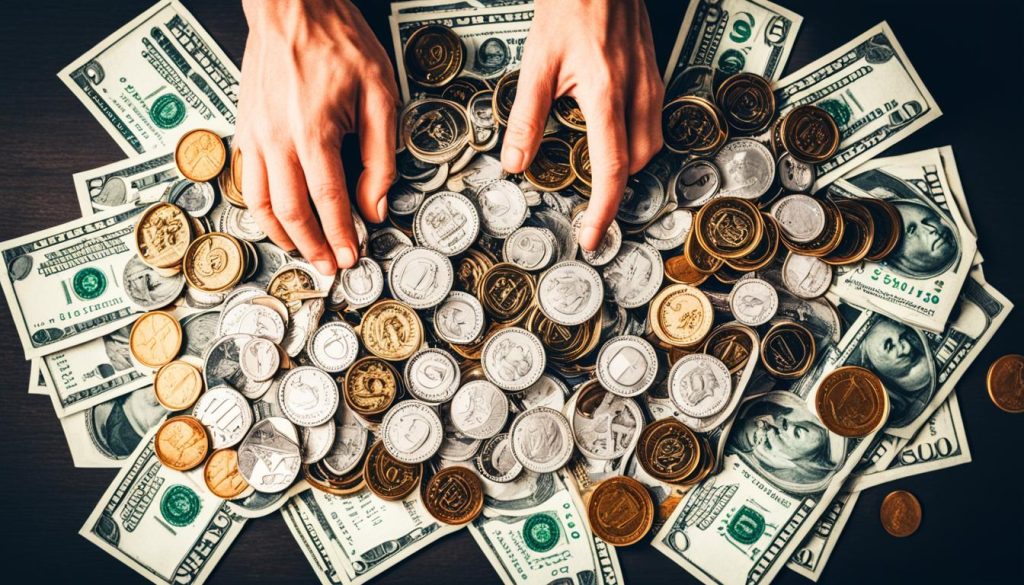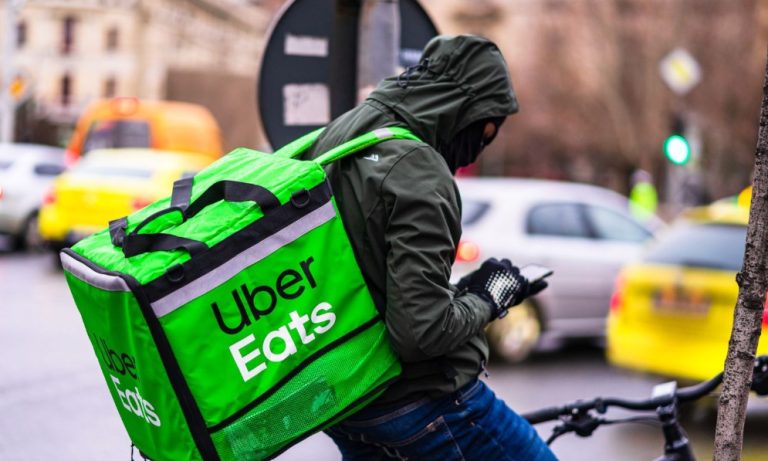Curious minds often ponder the inner workings of successful platforms like Vinted, a popular online marketplace for buying and selling second-hand fashion.
In this blog post, we embark on a journey to unravel the mystery behind Vinted’s profit system. Join us as we delve into the mechanisms that drive Vinted’s revenue model, exploring how this innovative platform turns transactions into earnings.
Discover the intricacies of “How Does Vinted Make Money?” and gain insights into the profitability strategies that underpin this thriving digital marketplace. Welcome to the world inside Vinted’s profit system.
What is Vinted?
Vinted is a platform where you can buy and sell secondhand clothes. It started in Lithuania in 2008. Since then, it has become a top global place for selling and buying used fashion items.
People from over 14 European countries, the UK, USA, and Canada use Vinted, totaling over 45 million users.
Vinted’s Origins and Growth
In 2008, two Lithuanian entrepreneurs, Milda Mitkute and Justas Janauskas, started Vinted. They wanted to make an easy way for people to sell and buy secondhand clothes. Their idea took off, and Vinted quickly became a major player in its field.
The Peer-to-Peer Secondhand Fashion Marketplace
Vinted works as a place for people to personally list and sell their used fashion items. This way, Vinted supports sustainable fashion by giving used clothes a new life.
This method helps lessen waste and harm to our planet. Additionally, Vinted earns through premium services, ads, and data use.

Vinted’s Business Model
Vinted makes money mainly through commissions from buyers. They charge a fixed fee for handling payments. They also add a variable amount, usually around 5%, based on the sale price.
Buyer Protection and Seller Fees
Vinted does something different than other marketplaces. It lets people sell for free. But, they make buyers pay a bit extra to ensure safe purchases. Buyers get protection for their purchases, fraud checks, and good customer service. If something goes wrong, like the item being very different from what was described, they can get their money back.
Commission-Based Revenue Stream
This model of earning through commissions keeps Vinted sellers happy. They don’t face extra charges. Selling on Vinted remains a good deal for those into buying and selling pre-loved fashion. This smart strategy has helped Vinted become a top choice in selling used clothes online.

How Does Vinted Make Money?
Vinted makes money by charging buyers for each successful buy. There’s a fixed fee for handling payments. Buyers also pay about 5% of the item’s price as a variable fee.
This way of earning money helps keep Vinted free for sellers. This makes it an attractive place for many who want to sell their clothes. Besides the buyer fees, Vinted also gets income from ads and sponsored content.
They let third-party advertisers place ads on the platform. With over 45 million users, Vinted offers a big chance for advertisers to connect with people interested in fashion and secondhand items.
Vinted offers special paid features too, like the ‘Wardrobe Spotlight’ and ‘Bumping’. These let sellers make their items more visible for a fee. These extra features bring in more money. They also help Vinted stay on top as a leading place to buy and sell secondhand clothes.

Seller Fees and Charges
Vinted mainly earns money from the fees linked to sales on its site. Sellers can list items for no charge. However, when you sell something, buyers pay a fee. This approach is different from many sites where sellers pay fees.
Fixed and Variable Fees for Successful Transactions
Buyers on Vinted pay a fixed payment processing fee. They also pay a variable fee, usually 5% of the sale price. Vinted chose this way to make money off the sale without making sellers pay.
No Listing Fees for Sellers
Here’s a big win for sellers: there are no fees to list your items on Vinted. This policy stands out from other sites that do charge for listings. The no-fee model pulls in more sellers, which leads to a wider range of items for buyers to choose from.
Even with Vinted’s buyer protection in place, sellers don’t have to cover those costs. Vinted’s approach, where buyers shoulder most financial responsibilities, makes the platform fair and attractive.
This fairness encourages more people to join the community for buying and selling secondhand clothing.
| Vinted Fee Type | Fee Amount | Who Pays? |
|---|---|---|
| Fixed Transaction Fee | Covers payment processing | Buyer |
| Variable Commission Fee | Around 5% of transaction value | Buyer |
| Listing Fees | None | Seller |

Buyer Fees and Charges
Vinted, as an online marketplace, values security and trust. It has set up a strong buyer protection policy. This policy includes important features for safety.
Buyer Protection Fee
On Vinted, a buyer protection fee is needed for purchases. This fee offers protection, checks for fraud, and has a team for help. It makes sure if something goes wrong, like damage or a wrong item, you get your money back. Just contact Vinted within two days of your item arriving.
Shipping Costs
People often wonder, “who pays for postage on Vinted?” The answer is the buyer, not the seller. This is how peer-to-peer markets usually work. It helps sellers and boosts more items being sold. But some find Vinted’s shipping costs high, particularly for small or light items.

Vinted believes these fees are important for a trusted platform. It aims for a good experience for both buyers and sellers. The company is trying to lower overall costs by improving processes.
Premium Features and Services
At Vinted, users get access to special features and services to make their time better and their listings more visible. Key options include the “Wardrobe Spotlight” and “Bumping”.
Wardrobe Spotlight for Increased Visibility
Vinted’s Wardrobe Spotlight is a hit in the UK market. It lets users show their items to others for a whole week. Sellers can get more attention for their listings, which helps them find buyers and sell more. After one item gets noticed, the seller’s other items also become easier to find by the Vinted community.
Bumping Listed Items for Prioritisation
Aside from the Wardrobe Spotlight, Vinted has a “Bumping” feature. For a small fee, sellers can push their items to the top for better visibility. This is a great chance for sellers to boost their sales by making their listings more prominent.
Using Vinted’s extra options can help sellers get their items in front of more buyers, leading to more successful transactions.
Advertising and Sponsored Content
Vinted makes money not just from sales but also via ads and sponsored posts. With 45 million members, it’s a top spot for ads. This offers advertisers a unique chance to connect with users interested in pre-loved fashion and lifestyle items.
Self-Service Ad Platform for Advertisers
At Vinted, there’s a self-serve ad platform for brands. Here, they can create and handle their own ad efforts. Advertisers pick the specific people they want to see their ads. This means ads go to those who are most likely to be interested.
Leveraging User Data for Targeted Advertising
Vinted gathers a lot of user data. It uses this to help advertisers show their ads to the right people. This way, ads are more likely to grab the attention of those who might actually buy the product or service.
This strategy has been key in Vinted’s success. As Vinted grows, more user information means more chances for advertisers. These opportunities help Vinted make more money through ads and keep growing.
Vinted’s Expansion and Growth
Vinted is growing at an incredible rate, making it one of the top spots for buying and selling pre-owned clothes. It’s now in fourteen European countries, plus the UK, USA, and Canada. With over 45 million users worldwide, it’s a massive hit in the secondhand fashion world.
The company is known for its wide selection of pre-owned items. Its easy-to-use platform attracts millions of users, becoming a top choice for secondhand shopping.
Global Reach and User Base
Vinted has been highly successful in attracting users due to its reach in European and North American markets. By offering sustainable and affordable fashion, it’s become a go-to place for people who want to buy and sell pre-owned clothes. The smooth selling process and vast item selection make shopping here a delight.
Funding and Investments
In 2023, Vinted earned about £509 million. This achievement marked a significant step for the Lithuanian based firm. Since then, its value has grown to a remarkable £4.5 billion.
These numbers show the strong belief investors have in Vinted’s future. This trust has allowed the company to improve its technology, marketing, and overall strategies. Through this growth, Vinted continues to solidify its leading position in the secondhand fashion market.
User Experience and Trust Initiatives
Vinted puts a big focus on making sure their marketplace is safe. They are driven to create a space where buyers and sellers can trust each other.
They do this with their solid vinted buyer protection policy and by sticking to their strict vinted community guidelines. These are enforced by their skilled vinted moderation team.
Buyer Protection Policy
The buying process on Vinted is made safe and easy because of its buyer protection policy. It comes with helpful features including purchase protection and fraud prevention.
If something goes wrong with an order, buyers can get a refund within two days of their item arriving. This is for items that are damaged, not as described, or if they don’t turn up at all.
Community Guidelines and Moderation
Vinted’s community guidelines set the bar for good user behaviour. They aim for everyone to have a positive time on the platform. Vinted has a team that watches over the site closely and deals with rule breakers fast. By sticking to these values, Vinted builds a community where trust and confidence grow among its users.
Vinted’s Competitive Landscape
Vinted is a top peer-to-peer marketplace for used fashion. It competes with many players in selling pre-loved items. eBay is the bigger online store, but Vinted shines by being all about secondhand clothes and trends.
Peer-to-Peer Marketplaces and Competitors
In the peer-to-peer marketplace scene, Vinted faces off against names like Depop, Poshmark, and ThredUp. They all meet the desire for eco and budget-friendly style. Yet, Vinted stands out for its easy-to-use app, strong buyer protections, and sense of community.
Differentiating Factors and Unique Selling Points
Vinted keeps it simple and handy, which is a big draw. Its layout and being mobile-first make selling or buying a breeze. Also, shoppers love its security features, offering them more confidence.
The platform thrives on group spirit too, encouraging talks and sharing among members. Add in their green pledge and fashion recycling focus, and Vinted wins over people who care about the planet.
| Peer-to-Peer Marketplace | Unique Selling Points | Differentiating Factors |
|---|---|---|
| Vinted |
|
|
| Depop |
|
|
| Poshmark |
|
|
Challenges Faced by Vinted’s Profit System
Vinted is well-known in the peer-to-peer secondhand fashion market. It’s made its mark but faced challenges in keeping profits up. One big issue was its downside of its rapid expansion.
Vinted, like some, grew too quickly and nearly went bankrupt in 2016. It had to make big changes to survive. The downside of vinted was its overreach, which strained its finances and nearly broke it.
To fix this, Vinted got Thomas Plantenga as its CEO. He chose to shrink its global efforts and focus on France and Germany. This decision helped Vinted focus on the downside of vinted and stabilize, leading to more growth and success.
The downside of vinted was how it struggled to control fast growth and almost failed. But, it learned to value focus and became a stronger business as a result.
How Much Does Vinted Make a Year?
Vinted has shown amazing growth recently. It’s a peer-to-peer marketplace for secondhand fashion. Last year 2023, Vinted earned an eye-watering £509 million. It proves that lots of people, more than 45 million, are using the app to buy and sell clothes. This success comes from smart business ideas and hard work to make money in the used-clothes market.
| Metric | Value |
|---|---|
| Vinted’s Annual Revenue | £509 million |
| Vinted’s Valuation | £4.5 billion |
| Vinted’s User Base | Over 45 million worldwide |
Vinted is not just making money. It’s also becoming very popular. More and more people want to buy clothes that are good for the planet and not too expensive. Vinted’s way of doing business and its easy-to-use platform mean it’s likely to keep growing. It will probably stay a top choice in the used-clothes market.
Conclusion
Vinted is now a top player in secondhand fashion sales between people. It earns money through fees from each sale. Users pay a fixed and a changing fee.
Over 45 million people in Europe, the UK, USA, and Canada use Vinted. It keeps growing because it makes buying and selling easy and safe. The company also offers ways to protect buyers and premium services.
Vinted is doing well in the growing market for used clothes. It’s trusted and meets the need for green and affordable fashion. With new ways to make money and better services for users, Vinted looks set to stay strong.
FAQs
What fees does Vinted charge buyers?
There’s a set fee for payment processing when you buy. You also pay around a 5% charge on each item you successfully buy.
Do sellers have to pay any fees on Vinted?
No, sellers don’t pay to sell items on Vinted. But, some costs might be involved due to Vinted’s policies and buyer fees.
What premium features does Vinted offer?
“Wardrobe Spotlight” and “Bumping” items are special Vinted features. These help make listed items more visible when users pay for them.
How does Vinted generate revenue from advertising?
Vinted makes money from ads by selling spaces to third parties. These ads can be managed by these parties and run on the Vinted platform.
How big is Vinted’s user base and global presence?
It’s used in 14 European countries, the UK, USA, and Canada. Vinted has over 45 million users worldwide, making it a leading online secondhand clothes store.





